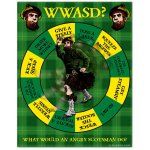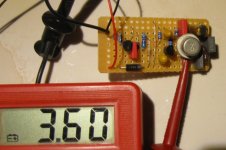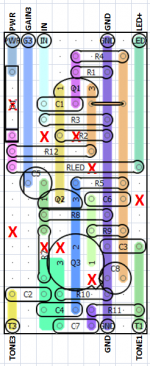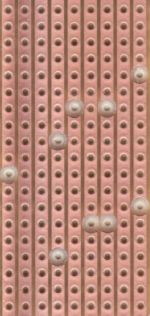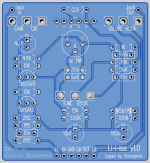Chuck D. Bones
Circuit Wizard
This started out as an investigation into the Apocalypse Audio Mona Lisa Overdrive, but quickly took on a life of its own. The Mona Lisa uses four transistors: a JFET source-follower input, a 2-stage Si transistor amplifier and another JFET source-follower for the output. I hate to waste JFETs, so I replaced the source-follower input with a Darlington emitter follower (Q1). The 3rd stage has a very low output impedance and doesn't need an output buffer, so the source-follower output got tossed overboard. I bumped the max gain up by 6dB and added a TONE control. Works well with Si transistors and gets just a little sweeter with Ge for Q3. The DC feedback loop around Q2 & Q3 keeps Q3's bias stable. This circuit is very flexible when it comes to transistors, just about anything will work. I did not need to adjust any resistors when changing Q3 from Si to Ge.
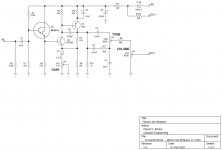
This thing really surprised me with how good it sounds. It has a tight bottom end, maybe a little too tight. I'm still fiddling with C5. Max gain is a modest 57dB. With single coil pickups, it plays clean when GAIN is at noon. Humbuckers require setting GAIN down around 10:00 for clean playing. Clipping comes on very smoothly as GAIN is advanced. Chords are clear, even with GAIN dimed. There is a nice midrange honk at the higher GAIN settings. I'm definitely going to build this one as an actual pedal, not just a toy on a breadboard.

This thing really surprised me with how good it sounds. It has a tight bottom end, maybe a little too tight. I'm still fiddling with C5. Max gain is a modest 57dB. With single coil pickups, it plays clean when GAIN is at noon. Humbuckers require setting GAIN down around 10:00 for clean playing. Clipping comes on very smoothly as GAIN is advanced. Chords are clear, even with GAIN dimed. There is a nice midrange honk at the higher GAIN settings. I'm definitely going to build this one as an actual pedal, not just a toy on a breadboard.


